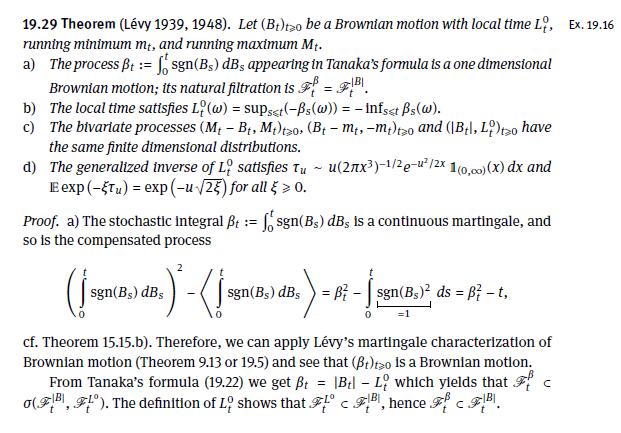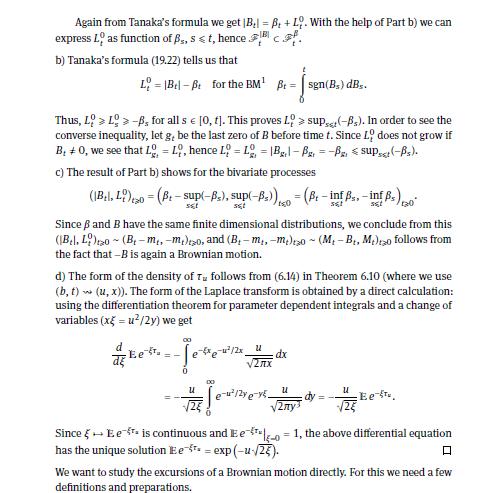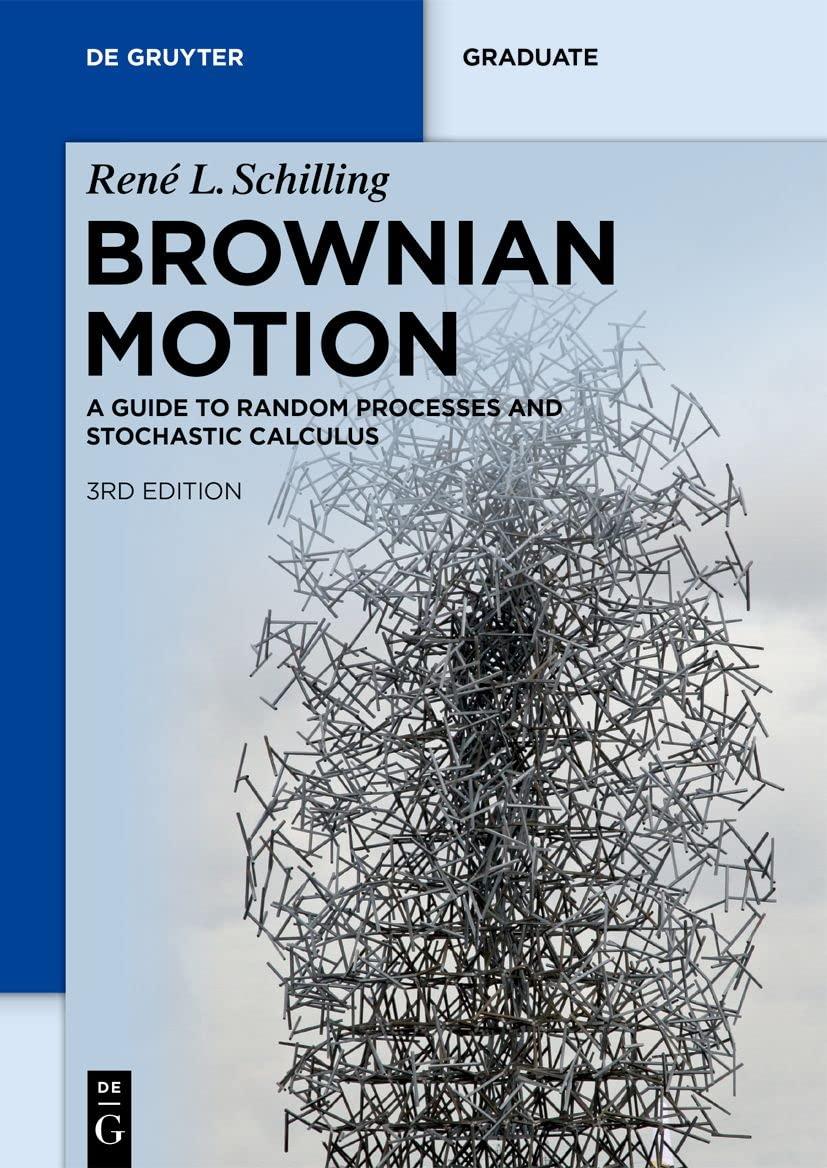The proof of Theorem 19.29 uses, implicitly, the following beautiful result due to Skorokhod [239] which is
Question:
The proof of Theorem 19.29 uses, implicitly, the following beautiful result due to Skorokhod [239] which is to be proved:
Lemma. Let \(b:[0, \infty) \rightarrow \mathbb{R}\) be a continuous function such that \(b(0) \geqslant 0\). There exist unique functions \(p, a:[0, \infty) \rightarrow[0, \infty)\) such that i) \(b(t)=p(t)-a(t)\);
ii) \(a(0)=0, a(t)\) is continuous and increasing;
iii) \(p(t) \geqslant 0\) and supp \([d a(\cdot)] \subset\{t: p(t)=0\}\).
Set \(a(t)=0 \vee \sup _{s \leqslant t}(-b(s))\) to show existence. For uniqueness, assume that there is a further pair \(\{\bar{a}, \bar{p}\}\) and assume that \(p\left(t_{1}\right)>\bar{p}\left(t_{1}\right)\) for some \(t_{1}\), hence on some suitable maximal interval \(\left(t_{0}, t_{1}\right]\). Now use iii) to see \(a\left(t_{0}\right)=a\left(t_{1}\right) \ldots\)
Remark. The third condition iii) can be equivalently expressed as \(a(t)=\int_{0}^{t} \mathbb{1}_{\{0\}}(p(s)) d a(s)\). This is the so-called Skorokhod (integral) equation.
Data From Theorem 19.29


Step by Step Answer:

Brownian Motion A Guide To Random Processes And Stochastic Calculus De Gruyter Textbook
ISBN: 9783110741254
3rd Edition
Authors: René L. Schilling, Björn Böttcher





